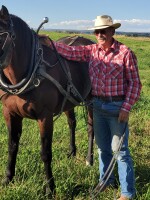The USDA reported that as of July 1st, there were about 94.2 million cattle and calves in the U.S., which is the lowest mid-year count on record in data going back to 1973. The agency also reported that the number of animals placed in feedlots is the lowest since 2017, and there is a large decline in the number of beef cows raised specifically for breeding purposes, which indicates that herd rebuilding hasn’t started yet. Cattle producers are willing to take the high prices for feeder cattle, and wait to see where the cattle market is headed before deciding to retain heifers to build back the beef cow herd. Market analysts point out that high beef prices are potentially pushing consumers toward cheaper proteins like pork and chicken, while also indicating that consumers can expect to pay record high prices for beef in grocery stores for the near future. Imports of beef from Brazil and Australia aren’t likely to help, since we already import about 400,000 metric tons of grass fed beef from Australia, that’s used for making fast food burgers, and last year, Brazil sent about 230,000 metric tons of beef to the U.S. But both countries are now facing tariffs on the beef we buy from them. Australian beef faces a 15% tariff, while Brazilian beef may be taxed at 50%, and the tariffs on both countries are subject to change at any moment due to a Trump whim. A few days ago, Trump was touting a trade agreement with Australia, which he claimed would lead to that country welcoming U.S. beef with open arms, however, reports from Australia indicated that they were not all that excited about purchasing U.S. beef, since they had plenty of their own.
US Department of Agriculture staff must be getting used to moving every four years, as the current Trump administration is implementing another relocation of the agency’s offices from Washington DC. to the hinterland, much as they did during Trump’s first term. On Thursday, Secretary Agriculture Brooke Rollins announced a “complete reorganization” of USDA, with the goal of relocating more than half of the agency’s Washington workforce to other locations across the country. Five USDA hubs are in the plan, to be located in Raleigh, North Carolina, Kansas City, Missouri, Indianapolis, Indiana, Fort Collins, Colorado, and Salt Lake City, Utah. Also, over the next year, the U.S. Forest Service will consolidate nine regional offices into one facility in Fort Collins. At this stage, USDA hasn’t revealed how much money the reorganization is expected to save taxpayers, and whether there will be additional staff reductions.
According to House Ag Committee Member Angie Craig, the decisions to make these moves were made without input from Congress or key stakeholders. She pointed out that these decisions demonstrated that the Trump administration “failed to learn” from previous relocation efforts, and is concerned that the administration is “willfully risking” the effectiveness of the agencies and programs supporting family farmers. She also noted that “when the first Trump administration moved USDA’s Economic Research Service and National Institute of Food and Agriculture away from Washington, about 75% of the employees declined to move, leading to a “massive brain drain” and a significant loss of productivity. According to a 2023 Government Accountability Office study, after the 2023 move, the Economic Research Service produced fewer reports following the move, and the National Institute of Food and Agriculture took longer to process grants.
Abraham Lincoln wrote, “Be sure you put your feet in the right place, then stand firm.”




